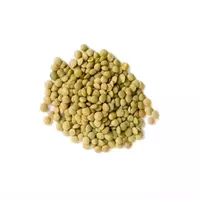Peas

Judging by the popular love and widespread distribution, many believe that peas appeared in Russia and only then other peoples learned about it from us. But this is not entirely true: peas came to Russia and Ukraine from eastern countries.
It originally grew as a wild plant in the Mediterranean, then began to be grown in India, China and Tibet, where it was considered a symbol of wealth and fertility. It is known that peas were also grown in Egypt, confirmation of this was found by archaeologists during excavations. However, even with all the desire, it is unlikely that it will be possible to trace the pedigree of peas, because petrified peas were also found in Switzerland, and some scientists generally believe that the peas were brought from America by Christopher Columbus.
But be that as it may, peas have long been considered beneficial and nutritious, for which they are highly valued in many countries. Already in the 19th century, pea sausage was included in the diet of soldiers of the German army. The French and Spaniards were also lovers of pea dishes, even on the royal table there was often pea stew with ham and pea puree, toasted with pork lard. And in the 15th century, peas with pork were served with equal success to the table of both kings and commoners. Ripened pea seeds are usually eaten boiled, often processed into cereals and pea flour.
Green peas are consumed fresh or canned. However, dried peas are no less popular, which is otherwise called husked peas. Peas in any form are a real treasure trove of essential vitamins and minerals.
Types and varieties of peas
Green peas
Peas mash
Husked peas
Dried green peas
Whigna (Cow Pea)
The benefits of peas
The useful properties of peas have long been beyond doubt. The peas contain much more citric acid than potatoes. It contains 2 times more vitamins of group B,
1. 5 times more vitamin B2, and 5 times more vitamin PP (! ) Than in bread varieties made from coarse flour, in which, as you know, there are more vitamins than in bread made from higher grades flour.
Peas contain pyridoxine, which is involved in the cleavage and synthesis of essential amino acids. A lack of this substance in the body can cause dermatitis and seizures. Selenium, which is part of peas, blocks the entry of heavy radioactive metals into the human body. For such properties, peas are rightfully considered an anticarcinogenic agent, which is an invaluable benefit of peas.
Traditional medicine, widespread in Russia, advises the use of a decoction of pea fruits and tops as a diuretic that contributes to the dissolution of stones formed in the kidneys. For all the benefits of peas and even its irreplaceability in the human diet, it should be remembered that the calorie content of peas is higher than the calorie content of other vegetables. Calorie content of peas shelled 298 kcal. by 100 gr. , only soybeans exceed these indicators.
Harm to peas
The harm of peas can manifest itself when eaten raw. In this case, it worsens the work of the digestive system, is able to irritate the mucous membrane. But in case of proper and moderate consumption, you will be pleased not only with the taste, but also with the benefits of peas, and there will be no harm to health.
peas 298 kCal
Energy value of peas (Ratio of proteins, fats, carbohydrates - ju):
Proteins: 20.5 g (~ 82 kCal)
Fats: 2g (~ 18kCal)
Carbohydrates: 49.5g (~ 198 kCal)
Energy ratio (bj | y): 28% | 6% | 66%
 Español
Español Français
Français Português
Português Русский
Русский 简体中文
简体中文 繁體中文
繁體中文 日本語
日本語 한국어
한국어 العربية
العربية Türkçe
Türkçe Қазақ
Қазақ Deutsch
Deutsch Italiano
Italiano Українська
Українська
